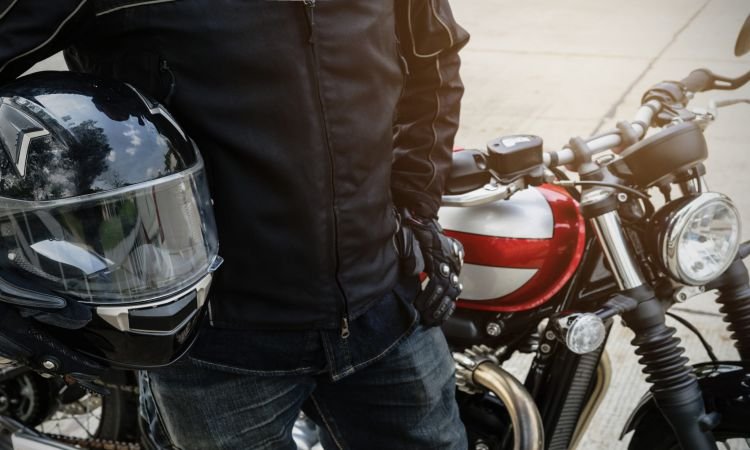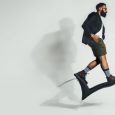 Riding a motorcycle is an exciting hobby if you want to get an adrenaline rush. However, it can cost you quite a bit before you even begin learning to ride a motorcycle. If you are on a tight budget, you might be wondering if cheap motorcycle gear provides one with sufficient crash protection.
Riding a motorcycle is an exciting hobby if you want to get an adrenaline rush. However, it can cost you quite a bit before you even begin learning to ride a motorcycle. If you are on a tight budget, you might be wondering if cheap motorcycle gear provides one with sufficient crash protection.
If cheap motorcycle gear meets certified safety standards like DOT, ECE, and Snell, then you will be protected in a crash. However, they compromise on comfort and quality materials, which allow them to wear out faster and require earlier replacement as a result.
All gear needs to meet certain safety standards to be legal on the road. These standards are enforced to ensure that riders are provided with a basic amount of safety while on their motorcycles.
As a result, even manufacturers producing cheap gear will have to adhere to these standards to sell their products in the market.
However, they cut corners in other aspects that help them lower the cost of the product. Manufacturers producing high-end riding gear spend years of research and money on improving their products.
This includes a better fit and ventilation, as well as smart features to assist the rider. Cheaper products are made in mass manufacturing units, as a result of which there is lower quality control and more scope for issues as a result.
Using cheaper materials is another common practice in such instances. They offer decent protection but are often heavier, less weather-resistant, and offer poor ventilation.
This can directly affect the fit and comfort of the rider as a result. It may also wear out much faster than high-end gear due to this very same reason, forcing you to get a new one sooner than you planned.
In the event of a crash, the cheap gear may save your life the first time. However, you will most likely have to get your riding gear replaced as it may have sustained damage beyond repair in the incident.
What is Considered Safe Motorcycle Gear?
The primary purpose of motorcycle gear is to protect the rider from impact injuries as well as scratches and bruises in case of scraping.
Any equipment that sufficiently protects a rider from these injuries and minimizes the risk of death or serious injury by a significant amount is considered safe.
Any motorcycle gear that has been certified by road safety organizations can be considered safe. Certifications like CE, DOT, ECE, and Snell are designed to provide different levels of safety as mandated by different regions. They however ensure that the rider is safe and protected at all times.
It is important to understand the type of environment you will be riding in as well. Dirt biking needs different riding gear compared to riding on the track. Therefore, it is crucial that you wear riding gear that is either multi-purpose or suited for the type of ride you are planning on any given day.
Any gear that you wear while riding is safe if it has not been involved in a previous accident or crash. This is the case with most new products that you purchase from a store or using the internet as they have not been used before and are brand new.
If the equipment in question has been involved in a previous incident, it is better to get it thoroughly inspected at one of these stores to ensure that it offers the same protection as before.
This includes checking for cracks and tears that may affect the integrity of the equipment if it is involved in another incident in the future.
Another situation to be careful of is when you are purchasing riding gear second-hand from someone else. Make sure that the person you are purchasing the equipment from is someone you know personally and is trustworthy.
Do a thorough inspection and be aware of the history of the equipment to know that you are not purchasing something that is damaged.
How Much Should You Spend on Motorcycle Gear?
A lot of inexperienced riders come to me wondering if spending all that money on riding gear is actually worth it. My most common reply to them is to ask them in return if they can put an actual price tag for the cost of their body and limbs, or even their life if they are in an accident.
However, with so many options available in today’s market, it can be very confusing for riders who lack the experience to choose their riding gear. In such situations, it is important to set a starting budget before deciding what gear to go ahead and buy.
I would recommend keeping an additional 30-40% of the cost of purchasing a new motorcycle aside from buying a completely new set of riding gear. For example, if you are purchasing a motorcycle for $5,000, keeping aside another $1,500 for gear would be sufficient.
Many riders believe that the most expensive equipment from the most famous brands can save your life no matter what. However, this is a misconception that must not force you into overspending on your initial budget.
Budget-friendly options that are much cheaper offer the same level of protection and comfort, doing an exceptional job of protecting you while on the road.
In my opinion, it would be ideal to spend around $300 on a good helmet that offers sufficient protection, padding, and ventilation that will keep you comfortable throughout your ride. A good riding jacket can cost between $200 – $500, offering you great back and elbow protection with CE-grade armor.
Riding boots can cost up to $300, offering great comfort and protection while ensuring you extract the best value from this piece of riding.
Riding pants can also cost anywhere between $200 and $300 for the most comfortable fit and best protection that includes CE armor for your elbows. A pair of gloves can set you back by about $50 for the best value for money buys.
Overall, it would be ideal to keep about $1,300 – $1,500 for riding gear if you are buying new equipment for the first time. Be on the lookout for clearance sales after the holidays on retail platforms and at motorcycle equipment stores to get yourself the best deals.
Motorcycle Gear that You Must Never SKIP?
I do not advocate skipping any kind of motorcycle gear as you can never be sure of what could happen on the road.
All riders, especially the experienced ones swear by ATGATT – All The Gear All The Time. The importance of being geared up every time you take to the roads keeps you safe despite being an inconvenience and taking up some time.
However, you may have various unknown constraints that prevent you from making gear purchases. In such situations, you must prioritize your purchases in the following order.
- Helmet
- Riding Jacket
- Gloves
- Boots
- Riding Pants
The helmet protects your head, which is the most important part of your body. Head injuries can lead to death or severe health issues in the long term. Riding without a helmet is also illegal in many states across the country because of this very same reason.
Riding jackets often come with armored protection for the chest, back, shoulders, and elbows. They protect vital organs and the spinal cord from impact injuries, reducing the risk of fractures and internal bleeding that can occur due to injuries caused by blunt force trauma.
Gloves are required to protect your fingers from flying dirt, stones, and debris that may be kicked up because of the car ahead of you. Having protective gloves can prevent fractures and hairline cracks due to the same.
They also help minimize vibrations and allow you to control the throttle, brake, and clutch levers more comfortably over long distances.
Shoes designed for motorcycle riding often have armor in certain areas like the toe and ankle, protecting the most sensitive parts of the foot in the process.
However, you can make do with a tough set of hiking boots as a makeshift arrangement if you cannot afford a pair of motorcycle boots straight away.
Riding pants can help protect and ventilate the lower body during rides. CE armor often protects the knees, with the pants connecting to the jacket for adding protection.
However, you can use knee pads over the pants you are wearing, which is a cost-effective option that helps protect you on the road.




